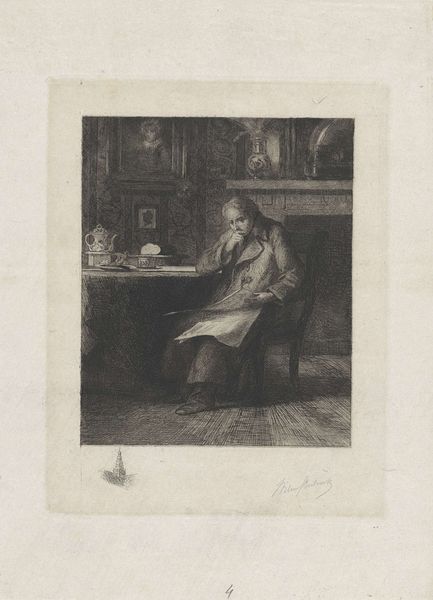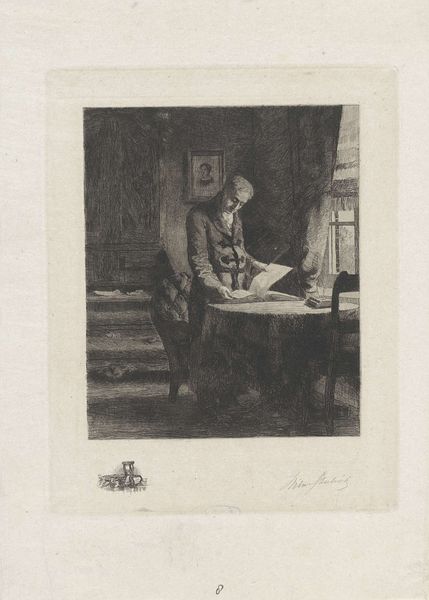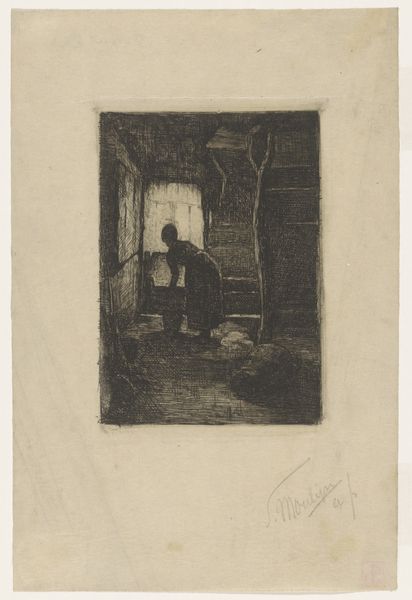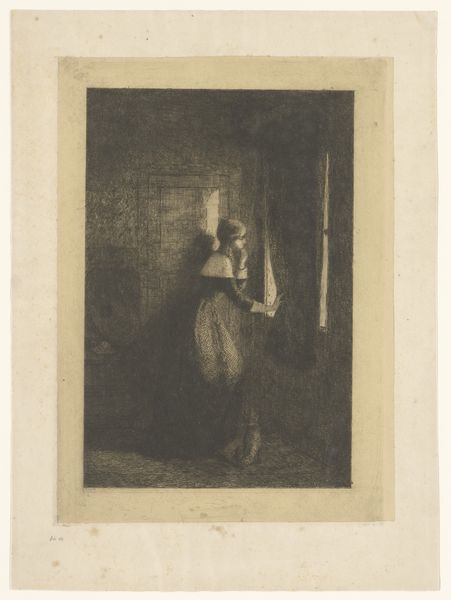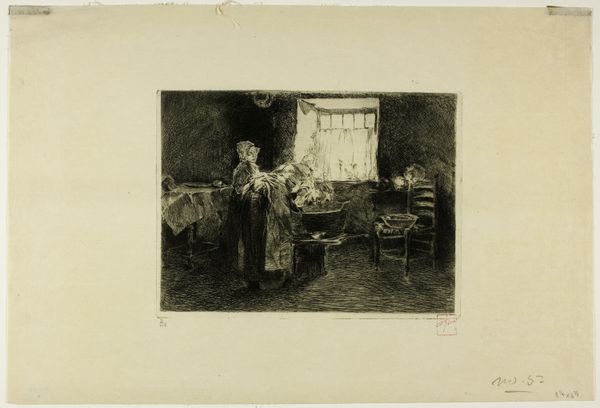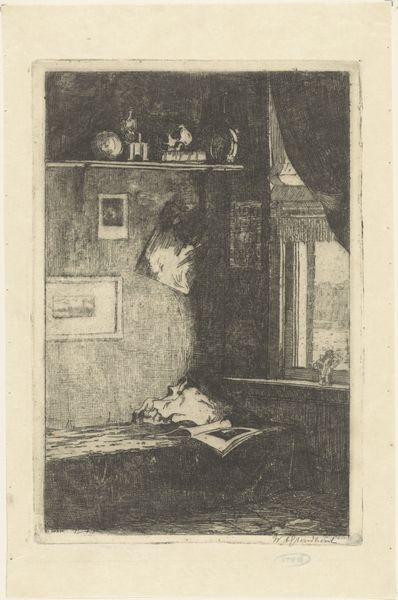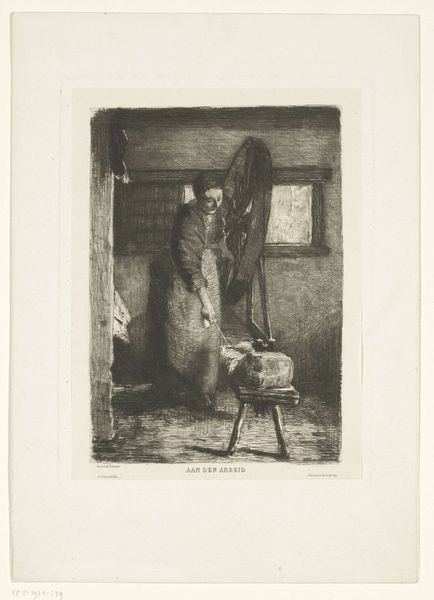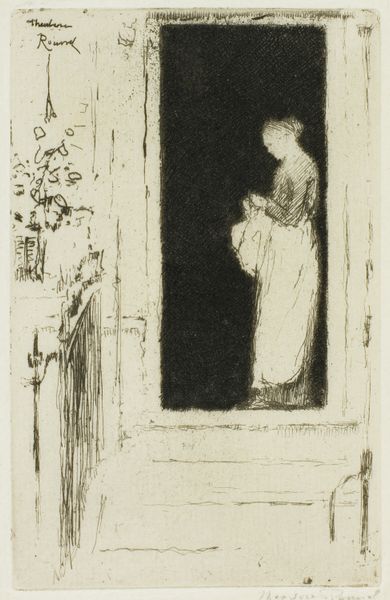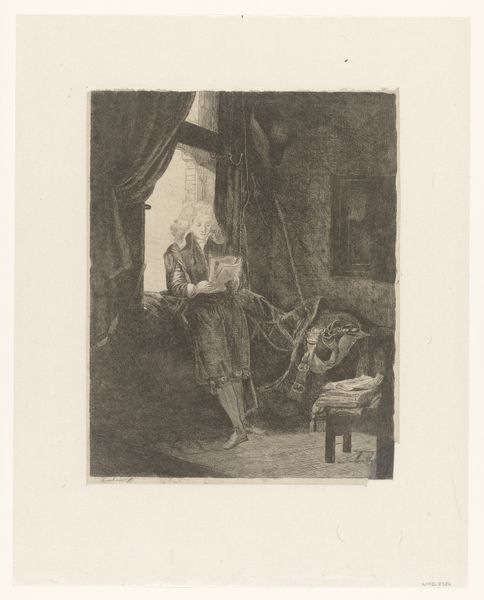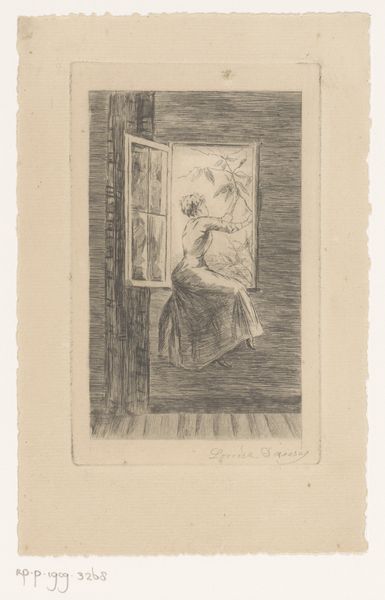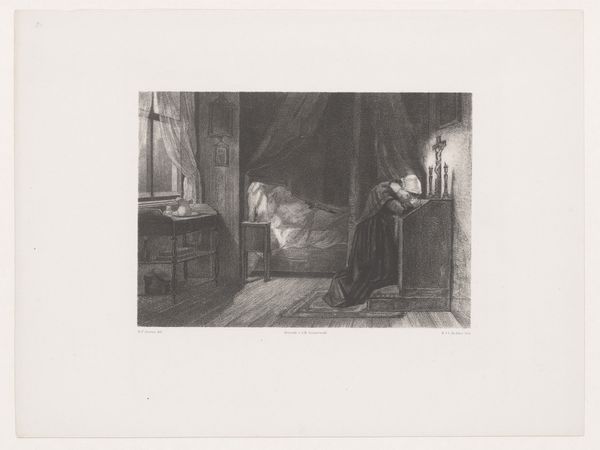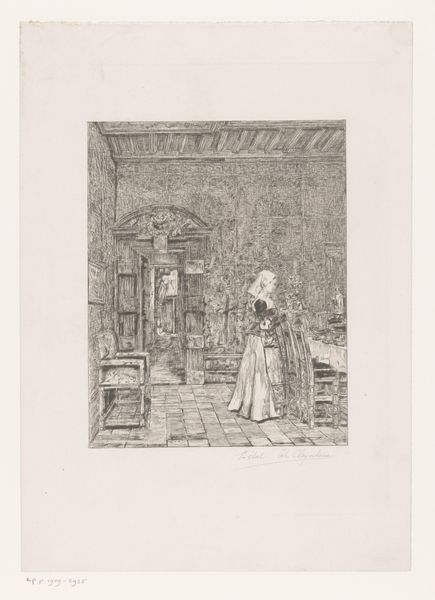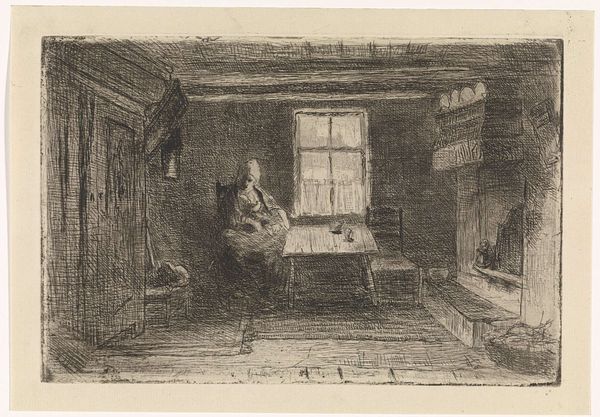
print, etching
#
pencil drawn
# print
#
etching
#
pencil sketch
#
pencil work
#
genre-painting
#
history-painting
#
realism
Dimensions: height 236 mm, width 187 mm
Copyright: Rijks Museum: Open Domain
Curator: This etching by Willem Steelink, entitled "Bekijken van een portret," dates from between 1866 and 1886. The use of etching and the marks that emulate a pencil drawing allow for fine lines. Editor: Ah, yes, it whispers rather than shouts, doesn't it? A little melancholic, perhaps. I imagine the sitter is a son lost at sea, or maybe he simply eloped with a flower girl! Curator: Consider the context—etching, a medium allowing multiple impressions, suggests an availability beyond the traditional wealthy art patron. This piece democratizes portraiture and potentially brings "high art" narratives to a wider audience through reproduction. Editor: Perhaps. Though, let’s be honest, there's a delicious sense of introspection in the gloominess. A figure alone, lost in thought, facing an image within an interior setting – like gazing into my own reflection after one too many gins! Notice how the chair is deliberately unoccupied—almost like a stand in to acknowledge someone is always missing from life's great moments. Curator: Right, and this print’s materials tell us much. It challenges traditional notions of artistic value. Instead of oil on canvas commissioned for display, it invites more intimate inspection in domestic spaces; the crosshatching suggesting shadow and nuance—a tonal range often ignored by rapid industrial practices, suggesting instead this artwork offers a commentary about handcrafted skills and the time embedded within. Editor: Hmm. It also makes me ponder: does anyone truly look at a portrait with an unbiased eye? Isn't it always about the stories we conjure up around a face, real or imagined? Either the artisan or we are weaving our dreams around others... This quiet corner has the stillness, you know, when one thinks nobody else is present. Delicious. Curator: Agreed. The bookshelves in the background hint at intellectual pursuit or even social mobility aspirations – the trappings of respectability made accessible through art ownership. Editor: You bring up the trappings… yes. But after having this journey into this framed shadowland with you, I feel even more keenly now about the interplay of art and artifice: both are tools. Curator: Indeed. We've unearthed an examination that links to broader narratives about industrial expansion, individual experiences, and of the materiality of mark-making, reminding viewers about historical realities—something an AI would simply forget.
Comments
No comments
Be the first to comment and join the conversation on the ultimate creative platform.
